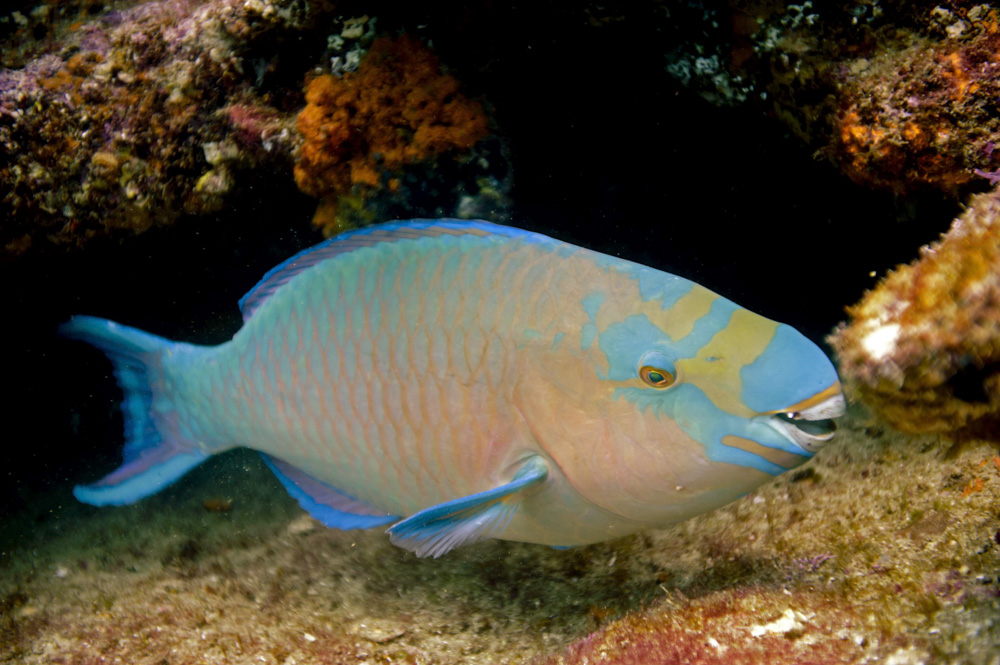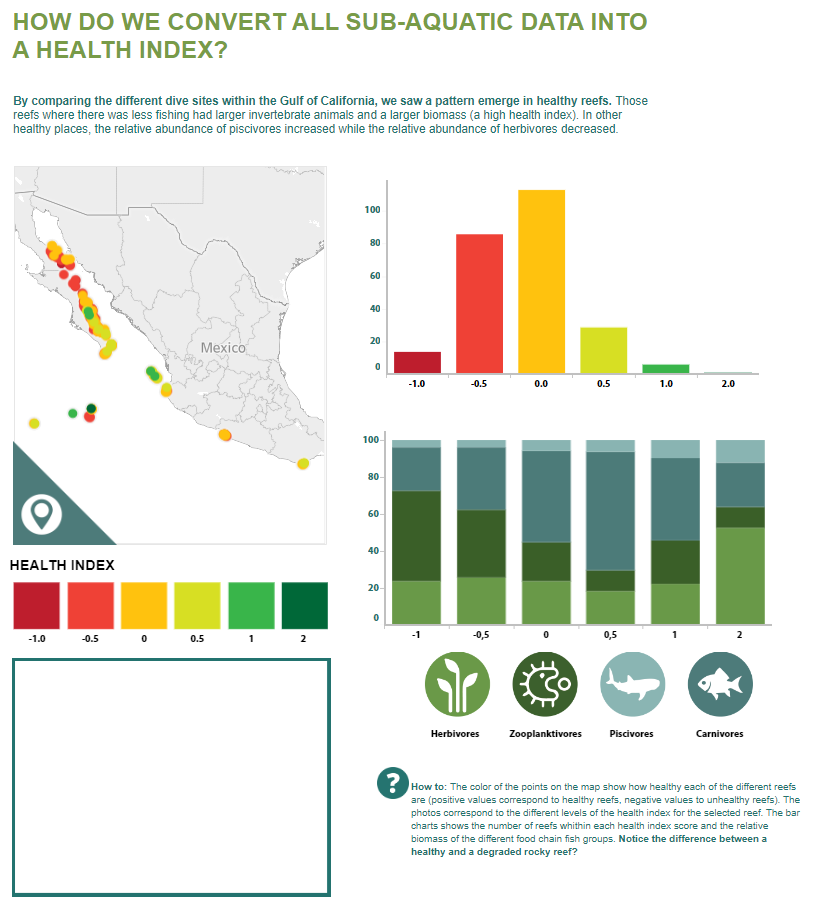Health index.

The size of the different species present in a community is well known to be important in terms of the functioning of the ecosystem of which they are part of. In Mexican rocky reef ecosystems, bigger species are often those that are higher in the food chain – the meat eating predators. The smaller species are usually those that are lower down the food web – the plant eating herbivores. Because of the importance of animal size, the Gulf of California Marine Program (GCMP) under water reef surveys always measure the size of all of the species recorded. This gives the scientists a good idea of the number of animals for each different level of the food chain that exist in the area. This also tells us a lot about the health of the reef.

Major findings: It is clear that at healthier, unfished reefs, there are bigger carnivorous and piscivorous fish and smaller urchins, starfish and herbivores than at degraded, fished sites. Although the measurements of the invertebrates are accurate due to the ease with which they are taken, the sizes of the more mobile fish species contain some amount of error. This is however, life of a surveyor underwater and every effort is made to take accurate measurements by getting close to fish and accounting for error in size measurements in our analyses.
Authors:
Alfredo Giron-Nava, Andrew F. Johnson, Octavio Aburto-Oropeza
Contact Information:
DOI:
10.13022/M3059H
Affiliations:
Scripps Institution of Oceanography
Acknowledgements:
N/A
How to cite this story:
Alfredo Giron-Nava, Andrew F. Johnson, Octavio Aburto-Oropeza (2014): Health Index. DataMares. InteractiveResource. http://dx.doi.org/10.13022/M3059H

